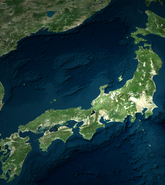NEWARK, CA – September 1, 2023 – On Saturday, September 1, 1923, a magnitude 7.9 earthquake struck the Tokyo, Japan region causing extensive damage to buildings and infrastructure. Total damage at the time of the event is estimated at 5.5-6.5 billion yen. Using Moody’s RMS® Japan Earthquake and Tsunami HD Model, for a repeat of the 1923 Great Kanto Earthquake today, we estimate the economic losses would be to the order of 48.5 trillion JPY or US$331 billion with insurance covering more than a third of the economic loss level. This loss estimate includes losses to property and business interruption and accounts for post-event loss amplification factors such as increases in the pricing for material and labor.
In the 1923 event, while the damage from the strong ground shaking was severe and widespread, fires triggered by the earthquake swept through a substantial part of the city causing significant additional damage. It was estimated that 70 percent of the structures were destroyed across the Tokyo region and including Yokohama. Other processes that contributed to the damage across a wider region included liquefaction, land sliding, and tsunami waves.
In all, the event impacted seven prefectures including Tokyo, Chiba, Ibaraki, Kanagawa, Saitama, Shizuoka, and Yamanashi. The ground shaking was felt over a wide area from southern Hokkaido to the Chugoku and Shikoku regions. Regrettably, casualties were very significant with estimates that more than 100,000 people perished which represented about 2.5 percent of the total Tokyo metropolitan region population at the time.
Prior to the Great Kanto event, Tokyo had experienced several damaging earthquakes including the 1855 Ansei Edo Earthquake. In the two decades prior to the 1923 earthquake, the population had doubled to almost four million. On the morning of September 1, 1923, the weather was muggy and windy impacted by a typhoon that had passed over Kyushu. Many people were preparing their midday meals using their cooking stoves when the event struck very close to noon, and as a result, the earthquake then triggered hundreds of fires across the city. The fire caused by the Great Kanto Earthquake was the largest urban fire to date.
When totaled, almost 300,000 buildings across the wider Tokyo/Yokohama region were destroyed, with ~212,000 burned, ~80,000 collapsed, and another ~80,000 partially collapsed. The total damage is estimated at 5.5-6.5 billion yen, which was more than a third of the Japan GDP at the time.
The city government responded with an ambitious reconstruction effort. Passing the City Planning Act of 1924, allowed the city to claim up to 10 percent of a property area (with no compensation) to allow for the re-adjustment of city lots. The goal was to reconstruct the city to be more fire resistant, with wider, safer streets and by adding numerous parks as fire breaks. It is also interesting to note that based on the observation of building damage, in 1924 Japan introduced the first building codes in the world that included a seismic design calculation method.
Today, Tokyo is the largest metropolitan region in the world with a population of more than 35 million – almost 10 times larger than in 1923. Tokyo sits on one of the most seismically active and tectonically complex locations in the world. Three tectonic plates converge under the Tokyo metropolitan region: the Philippine Sea, the Pacific, and the Okhotsk plates. The 1923 event occurred along the interface where the Philippine Sea plate is pushed beneath the Okhotsk plate on which the Japanese Island of Honshu sits. This interface is called the Sagami Trough which was the source of the larger 1703 8.1 magnitude Genroku Earthquake that also caused significant destruction, fires, and loss of life in Tokyo.
In comparing the 1923 event with if it were to occur today, a key difference is driven by shake damage with fire contributing only 7 percent of the losses and just a very small contribution from tsunami. Why? First, the reconstruction following the 1923 fires with the wider streets and inclusion of more, larger parks would mitigate the ability of fires to spread and to coalesce into large conflagrations. Today, in the highest populated parts of Tokyo, the population density is less than 50% of what it was in 1923. Additionally, the fire suppression systems in Tokyo are much more sophisticated today with lessons learned from many events including the 1995 Kobe earthquake which had a significant component of its damage due to fires. Moreover, fire and seismic design requirements for structures built in Japan are some of the most sophisticated in the world, which limit the overall damage, the potential for fire ignitions, and protect lives.
Chesley Williams, Senior Director, Global Earthquake Product Management, Moody’s RMS said: “The 1923 event was the last major damaging earthquake to directly hit the Tokyo region. Tokyo has a long history of damaging events including the 1703 M8.1 Genroku Earthquake and the 1855 M7 Ansei Edo Earthquake. The most significant damaging event for Japan in recent years was the 2011 M9.0 Great East Tohoku Earthquake. The 2011 event impacted more remote parts of Japan and had a very significant component of losses due to tsunami waves. The estimated loss level for a repeat of the 1923 event (48.5 trillion JPY) is roughly three times the economic impacts observed during the 2011 event.”
Later in September, Moody’s RMS will be publishing a white paper that expands on the potential impacts of a repeat of the 1923 event.
END
The technology and data used in providing this information is based on scientific data, mathematical and empirical models, and encoded experience of scientists and specialists. As with any model of physical systems, particularly those with low frequencies of occurrence and potentially high severity outcomes, the actual losses from catastrophic events may differ from the results of simulation analyses.
MOODY’S RMS SPECIFICALLY DISCLAIMS ANY AND ALL RESPONSIBILITIES, OBLIGATIONS AND LIABILITY WITH RESPECT TO ANY DECISIONS OR ADVICE MADE OR GIVEN AS A RESULT OF THIS INFORMATION OR USE THEREOF, INCLUDING ALL WARRANTIES, WHETHER EXPRESS OR IMPLIED, INCLUDING BUT NOT LIMITED TO, WARRANTIES OF NON-INFRINGEMENT, MERCHANTABILITY AND FITNESS FOR A PARTICULAR PURPOSE. IN NO EVENT SHALL MOODY’S RMS (OR ITS PARENT, SUBSIDIARY, OR OTHER AFFILIATED COMPANIES) BE LIABLE FOR DIRECT, INDIRECT, SPECIAL, INCIDENTAL, OR CONSEQUENTIAL DAMAGES WITH RESPECT TO ANY DECISIONS OR ADVICE MADE OR GIVEN AS A RESULT OF THE CONTENTS OF THIS INFORMATION OR USE THEREOF.






